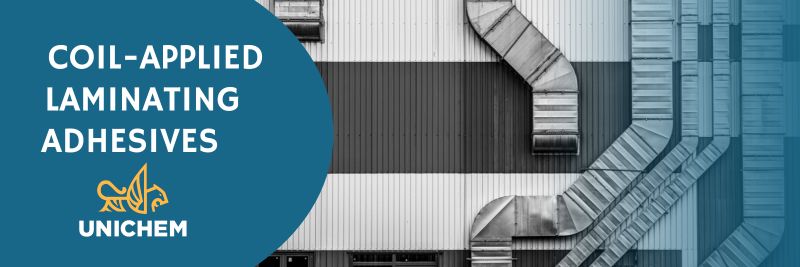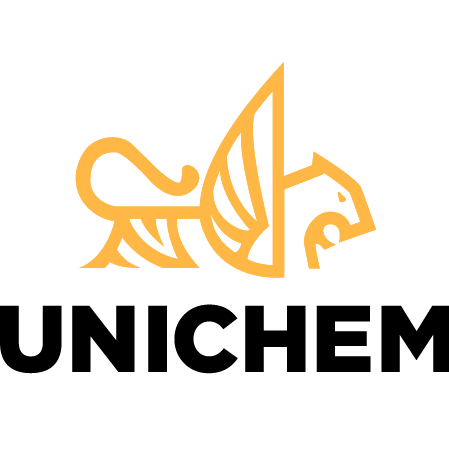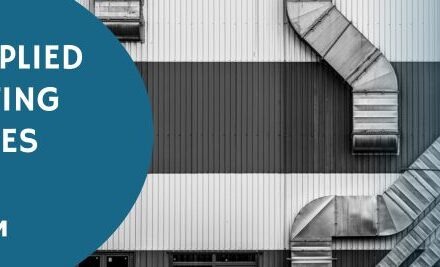
Manufacturers working with coil-applied laminates require adhesives that strike a balance between performance, process efficiency, and compliance with evolving regulations. The choice between solvent-based adhesives vs water-based adhesives often comes down to production speed, durability under thermal and chemical stress, and long-term reliability in end-use environments.
While both technologies have a place in industrial applications, solvent-based laminating adhesives remain the benchmark in coil coating lines due to their high bond strength, rapid curing, and ability to withstand demanding operating conditions. Water-based adhesives, although less common in coil lamination, are sometimes chosen for their reduced VOC emissions and environmentally friendly profile. Understanding these distinctions helps engineers and product teams align adhesive selection with both performance and compliance goals.
Bonding Performance and Cure Characteristics of Solvent vs. Water-Based Adhesives
The biggest differentiator between solvent- and water-based adhesives lies in initial bond strength and cure profile.
- Solvent-based adhesives dissolve the adhesive polymer in a carrier solvent, which rapidly evaporates during coil processing. This results in high initial tack and strong adhesion, which is critical for maintaining bond integrity on continuous, high-speed lines. The chemistry also enables consistent curing, reducing the risk of incomplete bonds or weak film formation.
- Water-based adhesives suspend polymers in water, offering lower VOC emissions but requiring longer drying times. This makes them less practical for coil lamination, where line speeds and cure windows are tightly controlled. In many cases, water-based systems require additional heat or longer dwell times to cure fully, which can increase costs and complexity.
For coil-applied laminates, this difference in curing efficiency makes solvent-based adhesives the preferred choice, ensuring reliable adhesion under demanding throughput conditions.
Thermal and Chemical Resistance in Industrial Environments
Adhesives used in coil-coated laminates must perform under a range of thermal and chemical stressors, including high-temperature cycling in HVAC systems and exposure to solvents and oils in industrial or transportation environments.
- Solvent-based adhesives are engineered to maintain structural integrity and bond strength under these stresses. Their crosslinked networks deliver resistance to heat, oils, and aggressive chemical agents, ensuring long-term reliability even in harsh environments.
- Water-based adhesives, while effective in some industrial settings, generally lack the same level of resistance. Extended exposure to high heat or chemical attack can degrade their performance over time, making them less suitable for mission-critical applications where failure is not an option.
These distinctions reinforce why solvent-based laminating adhesives are relied upon in appliance panels, construction elements, and transportation components, where safety, durability, and compliance are equally essential.
Coil Coating Process Advantages of Solvent-Based Adhesives
For manufacturers, one of the most significant advantages of solvent-based adhesives is their seamless integration into coil coating operations. The solvent carrier promotes consistent viscosity and film formation, enabling adhesives to be applied evenly across long coil lengths without streaks, voids, or pinholes.
During the curing stage, solvent evaporation occurs quickly, supporting faster line speeds and ensuring that bonds develop strength early in the process. This minimizes downtime and supports the high-throughput efficiency required in appliance, HVAC, and transportation manufacturing. By contrast, water-based systems often struggle with slower drying and inconsistent film build, creating challenges in continuous coil processing.
The ability to deliver uniform adhesion and controlled cure cycles makes solvent-based laminating adhesives the most dependable option for coil-applied laminates, where both processing efficiency and end-use performance are essential.
Environmental and Regulatory Considerations for Adhesive Selection
While solvent-based adhesives deliver superior performance in many coil coating applications, environmental considerations are increasingly shaping adhesive selection.
- Water-based adhesives are often promoted for their lower VOC content, which aligns with stricter emissions regulations and sustainability goals. In specific applications, this can make them a viable alternative, particularly when thermal or chemical exposure is less severe.
- Solvent-based adhesives, though higher in VOC content, remain critical for applications requiring high bond strength, rapid curing, and chemical resistance. Advances in solvent recovery and thermal oxidation within coil coating lines help reduce overall emissions, enabling manufacturers to strike a balance between performance and compliance.
Ultimately, adhesive selection requires a careful evaluation of end-use demands, regulatory requirements, and line processing constraints. For many industries, solvent-based systems still represent the most practical solution when durability, throughput, and reliability are non-negotiable.
Why Solvent-Based Adhesives Remain Essential in Coil Coating
In high-demand manufacturing, performance and reliability often take precedence over other considerations. Solvent-based adhesives continue to lead in coil coating because they provide fast-curing, high-strength bonds that withstand the rigors of forming, stamping, and long-term service exposure. While water-based systems may have a place in select applications, their limitations in thermal resistance, cure consistency, and line integration make them less suitable for most industrial laminating environments.
By leveraging solvent-based technology, manufacturers gain a proven solution that supports production efficiency, structural integrity, and product longevity, all while maintaining compatibility with modern coil coating lines.
For coil-applied laminating processes that demand consistent bond strength, durability, and rapid throughput, solvent-based adhesive systems remain the industry standard. With engineered formulations and advanced processing methods, UNICHEM delivers adhesive solutions that help manufacturers meet both operational efficiency and long-term product performance goals.
UNICHEM brings over 50 years of expertise in engineering, high-performance coatings and adhesives for demanding industrial applications. We offer coil-applied adhesive solutions designed to enhance production efficiency, ensure durability, and meet the evolving needs of global markets. Contact us today to learn more about our solvent-based adhesive technologies for coil-applied laminating adhesives.


